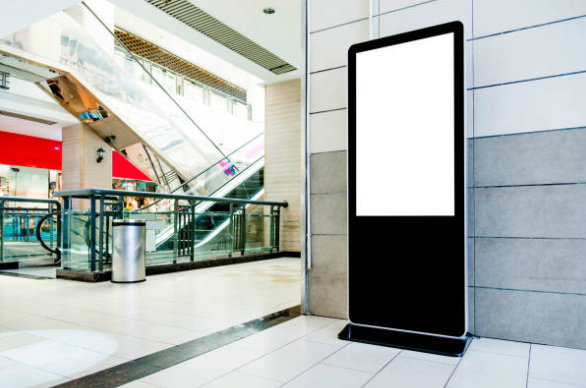These days, almost every store, warehouse, and vending area carries a screen. What started out as a simple sign-in window has turned into a live stage for promotions, stock updates, and customer cues. Whenever data is the star of the show, LCD (Liquid Crystal Display) screens keep stealing the spotlight thanks to their sharp colors, low power draw, and sturdy design.
This article breaks down how LCD panels work, why they rarely miss a beat under harsh everyday use, and why more retailers and warehouses count on them. We’ll also highlight how companies like Zhsunyco are rolling out plug-and-play displays that grow and shrink with any operation.
Understanding LCD Technology: A Digital Display Standard
LCD stands for Liquid Crystal Display, and this flat-panel screen type creates pictures by guiding light through layers of special liquid crystals. The crystals themselves don’t shine; they rely on a backlight or reflector behind them to add color or brightness. When a tiny electrical signal hits the screen, the crystals twist and let different amounts of light through two crossed filters, turning dots into letters, numbers, or full images.
Thanks to their flat, thin design and lower hunger for power, LCDs have become the go-to choice for almost any display need. Because they weigh far less than older tube monitors, you find them everywhere, from smartphones and tablets to train station signs and car dashboards.
As factories have learned new tricks, modern LCDs now respond faster, show deeper blacks, and look good from steeper angles than those from just a few years ago. Such gains make them popular not only in homes, but also in offices and schools where screens must last, stay clear, and be easy to read for long hours.
The Rise of LCD Displays in Retail Environments
Updating prices, promotions, and product details in a store used to mean printing new labels and hoping every aisle got the correct version. Paper tore, someone spilled something, and soon prices across locations told a confusing story. Now, digital shelf labels with LCD screens are changing that entire process into something fast and reliable.
Today stores are putting LCD displays to work in several ways:
- Electronic shelf labels (ESLs) that show live prices and product info
- Interactive kiosks for questions or product lookup
- Digital signage for ads or store announcements
- In-store navigation and wayfinding
Because every screen plugs into the same system, every piece of information stays accurate no matter where a shopper looks. When a price drops for a limited-time offer, the change can be sent from one central computer and the new number appears on every tag at exactly the same moment.
Zhsunyco offers https://www.zhsunyco.com/es/pantalla-lcd/ of LCD-based digital displays designed for modern stores. Their screens link easily with existing networks, so teams spend less time running updates, save on supply costs, and give customers a smoother shopping experience.
Stores see real perks when they switch to LCD shelf screens:
- much less time spent changing price tags
- inventory counts that match what is on the floor
- promotions that go live the moment a decision is made
- a fresher, tech-forward image that customers notice
In fast-moving markets like grocery and electronics, those same screens also trim paper costs and cut printing waste, making operations leaner and greener.
LCDs in Smart Warehousing and Logistics
Warehouses and shipping hubs are now adding LCDs, too. Inside these busy areas, screens show bin locations, product barcodes, safety tips, and system alerts. The goal is simple: give workers live updates so goods flow smoothly through the supply chain.
In a modern warehouse, small LCD screens stick to shelves, pallet racks, and work stations. Each tag does a few handy things:
- It shows what is stored at that spot.
- It tells how much is left or if more is needed.
- It gives step-by-step picking tips for workers.
- It flashes warnings about dangers or system faults.
People in logistics choose LCDs because they handle tricky light and heat. The crisp screen stays clear in dark corners or under bright overhead bulbs. Rugged cases and energy-smart designs let the tags run for months without constant service.
Cutting-edge firms like Zhsunyco now make heavy-duty LCD boards that fit into tough warehouse floors. These units shrug off bumps, link to cloud apps, and cut down on paper lists.
Why LCD Is Still the Top Pick
Even with buzz around OLED and E-Ink, LCD sticks around because it balances price, brightness, and long life for factories and stores.
LCD screens offer:
- Clear readability whether the room is flooded with sunlight or dimmed to a mood-setting glow.
- Low energy draw, especially when running simple black-and-white graphics or refreshing less often.
- Impressive lifespan, so users spend less time and money replacing panels month after month.
- Flexible size range, covering everything from wristwatch digits to towering video walls in stadiums.
- Easy-to-link code, so developers can drop displays into existing software without a ten-day learning curve.
Because the science behind LCDs is tried-and-true, buyers face fewer surprises, steadier stock levels, and prices that stay competitive when ordering at scale. Organizations placing an order today tap into years of reliability rather than chasing the next shiny gadget.
For retailers, clinics, factories, or warehouses that want to plant the same screen scheme everywhere, LCDs still deliver a sensible mix of speed, budget room, and room to tweak settings down the road.
Looking Ahead: LCD in a Connected World
As digital transformation pushes companies toward smarter operations, LCDs are growing up too, ready to join web clouds, IoT buttons, and real-time dashboards. Cloud power plus tiny sensors lets a single panel update language, promote a sale, or flag a fault hundreds of miles away.
Future Insights for LCD Technology
Looking ahead, the way organizations deploy LCD screens is set to change fast:
- Smart connectivity: Displays that pull updates from the cloud without wires.
- Modular scalability: Screens built in any shape or size to fit the task at hand.
- AI-powered content management: Content swaps in real time based on how viewers interact.
- Eco-friendly manufacturing: Greener production using sustainable parts and processes.
Thanks to these upgrades, LCDs stop being just picture panes; they turn into touch points between people and smart systems. Their use in retail, warehousing, and logistics is likely to grow as firms replace paper tags and manual boards with faster, more accurate digital signage.
Takeaway
Far from fading, LCD tech is thriving in today’s digital-first landscape. Its stability, broad formats, and simple hookups keep it a central part of every modern work space. Whether guiding shoppers or logging stock in a warehouse, a well-configured LCD shows its worth across industries.
Trailblazers such as Zhsunyco lead this charge by crafting screens that blend present needs with future-ready features. Check out their full line of LCD displays and see how these solutions can fit in your set-up.


